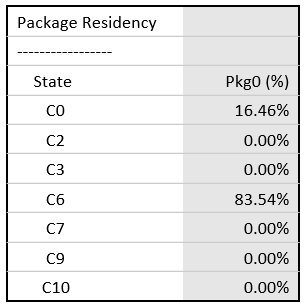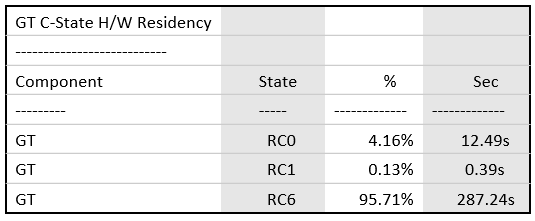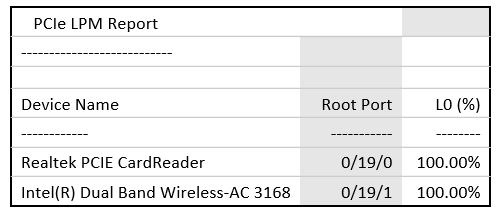This is a real case shows how Intel® SoC Watch resolves the issue and save more system's power consumption. After applying SoC Watch analysis and following the debug clues to toggle the root-cause, the target product achieved 8.5 hours power life from original 7.2 hours, got 18% power sustainability increased.
The Background.
Customer was guided to run SoCWatch to capture the profiling result. According to SoCWatch logs, huge percentage of time that system spends on is in IDLE mode. Through observing SoC Watch log, several suspicious issues are identified during system idles.
The Analysis on Intel® SoC Watch summary report.
The followings contain couple of suspect issues in SoCWatch's summary report. Let's review them one by one.
a) Package C6 states residency is not good enough for system idle.
Here we can observe that system stay 83% residency on C6 and 16+% in C0. This could possibly be caused by
· Several tasks & process are still running in the background
· Pre-installed applications such as anti-virus software, OEM software, and free public storage background applications, etc.
· LTR(Latency Tolerance Report) constraint by devices such as PCIe, SATA devices.

b) RC6 residency is slightly low.
95% RC6 is slightly low and the expectation should be 98% or 99% plus. Suspecting few activities triggering screen updates.

c) PCIe link power states are fully active
The PCIe link power management shows 100% in active for both card reader and WiFi. This is unusual for the condition the system is under system idle state.

d) SATA link power management shows zero slumber.
For SATA LPM, the storage may support slumber state. Because the percentage of active state is high in system idle scenario, the ALPM may not be enabled.

The Result
Following the potential reasons reading from SoC Watch logs, driver teams investigate the report and fix to support lower power states. Meanwhile, removing unnecessary background applications and fixing BIOS code for the above findings, this target device's expected battery lifetime increases from 7.2 hrs to 8.5 hrs after test. The battery lifetime increased by 18%.